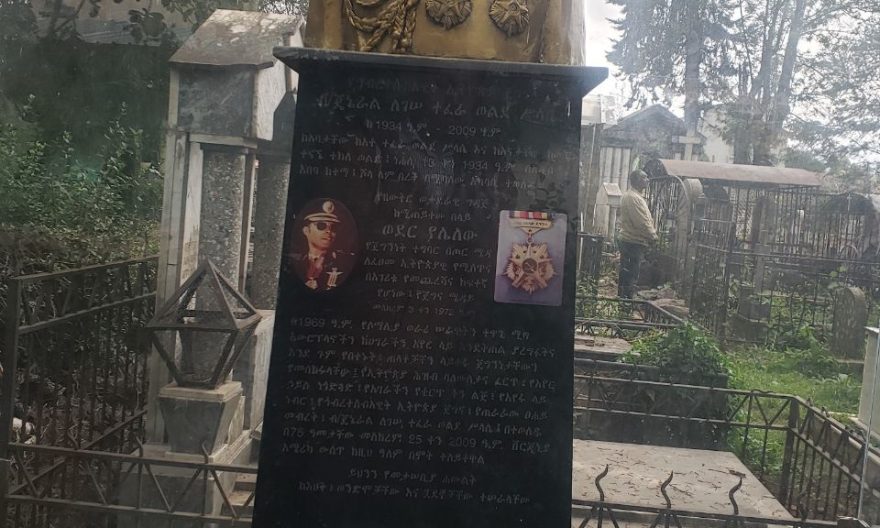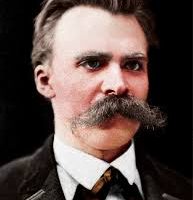
(Adoration of a hero is magnifies his footprints for would-be heroes to follow suit)
(This article is adopted from the biography about Brgadier-General Legesse written by Major Eyob Abate in Amharic in connection with the hero’s 5th death anniversary /Edited by journalist Eyob Demek and translated into English by Alem Hailu G/Kristos)
Brigadier General Legesse Tefera was born to his father Tefera W/Selassie and his mother Tenagne G/Welde on August 26 in 1942 here in Addis Ababa at a village called Shola commonly referred to LamBeret.
When he came of age Legesse was sent to a close by school called Dejazemache Wendyerad to attend elementary school education .He attended his high school education at Haile Selassie Secondary School (Kokebe Tsebah).It was successfully he completed his school leaving examination.
Out of his fervent interest to serve his country as a solider joining the Haile Selassie Military Academy on 11 October 1965 he became a nominee cadet of the 7th batch of the academy to join the famous and the time-honored Ethiopian Ground Force.
After pursuing Military Leadership courses in the academy for two years and half as he successfully passed the exam which allowed him a green light to take the training that entitles nominees the skill to fly fighter Jets, he joined the Ethiopian Air force.
Simultaneously attending the courses in Harar Military Academy, he graduated with a diploma at a rank of second lieutenant on 15 October 1965.
Back into the Ethiopian Air force at Debrezeit, he completed his education successfully.
General Legesse marked for his athletic posture was among the finger-counted army members of Ethiopia who were knowledgeable both in the infantry leadership and fighter jet flying skills.
He started job in the 9th squadron of the Air force. Aside from executing tasks he was assigned to carry out in battle fronts, he was delivering courses at the Ethiopian Air Force. Thus he had helped a lot in churning out able pilots much-needed by the country.
To allow Legesse hone his fighter jet skills and learn about F-5E interceptor, he was sent to the Arizona-based American Air Force College. Concluding the training with flying colors he returned back to his country.
When Emperor Haile Selassie I welcomed Kenyan president Jomo Kenyatta in late1960th a military parade was staged here in Ethiopia. Prominent among the air force pilots that showed their acrobatic prowess in the sky was found the then Sergent Legesse Tefera.
In 1977 when the bellicose Seid Barres troops armed to the teeth with modern arsenals encroached on Ethiopian territory 700km deep in the southern and eastern part of the country on their sway demolishing police stations and military units dotting the map, the then Major Legesse Tefera, among his peers, played a pivotal role in annihilating invaders’ fighter jets in the air as well as tanks and arsenals on the ground. These valorous sons of Ethiopia succeeded in rumpling enemy forces driving terror into the core of the invaders’ being. At that demanding time Ethiopia faced, Legesse and friends spared it destruction and shame.
In its first mission, deploying General Legesse and friends, aside from disarraying the Somalia Ground Force, the Ethiopian Air force emasculated the Somalia air force. Following the air-to-air fight waged by the pilots individually and in group for two months heroic sons of Ethiopia destroyed 12 Mig 21 and 13 Mig 17 jets. Altogether they shattered 25 jets. They compelled the Seid Barre’s jets not to stir a wing obsessed by their military adventures. In such a way Ethiopian pilots ensured the country’s air sovereignty.
The main and sticking one among such Ethiopian hero pilots was the tiger of the sky Legesse Tefera who shattered to pieces 6 Somalia fighter Jets and who craftily forced two Somalia Mig 21 jets clash with each other in the sky while loaded with bombs and rockets meant to shower Ethiopian army with. Making a circular motion soaring in two the sky Legesse began chasing the Somalia jets from behind that soon clashed with each other out of fear and rude surprise they encountered.
His and his contemporaries’ heroisms were not only confined to dog fights in Ethiopia’s sky to put Somalia’s fighter jet out of use and to force them retreat with their tails between their legs. But they also spanned to flying into Somalia airspace to destroy and burn the helicopters on the run off fields of Hargessa and Berbera air force bases.
The valorous pilots of Ethiopia as well turned Somalia’s logistic bases into rubles. They burnt arsenals, mines and fuel depots. Fuel tankers were put on fire. Stripped of a spine, leave alone flying on Ethiopia’s sky, Somalia’s fighter jets could not flap their wings in Somalia’s run off. As the backbone of the Somalia’s Air Force was broken it was forced to take a few of its remaining jets, reduced to a state of useless vehicles, to the southern part of the country that abuts the Mediterranean Sea.
Alert round the clock, General Legesse and friends put Seid Bare’s Air force out of shape.
In their second mission General Legesse and friends without able contenders devastated and disarrayed the mechanized Somalia ground force. They made Somalia’s infantry, artillery and air defense system out of shape. They targeted the front and back flanks of the Somalia infantry.
On the Dire Dewa front to dislodge enemy along with Ethiopian ground force, Ethiopian pilots scoured forces in Jeldesa, Hurso, Hawele, Shele, Albahene and Aysha.
On Harar front they targeted Babile, Bisdemo, Fedisa, Kambolcha, Arifkalid and Omarkilo.
On Jigjiga front they targeted Karamara, Fafeme, Hadew, Kore, Chenaksen,Fike and Kebri beyah.
On Ogaden front Degehabure,Kebre dehar,Warder,Welwel,Aemi,Gode,Kelafo,Mustahili,Wabeshebele shelekos
Piercing into Somalia’s sky and conducting sorties in Hargesa, Berbera,Kalekayu,Logran, Ferandi bridge they had carried out their duties effectively by dismantling enemies arrangement. At long last defeated the enemy troops were compelled to evacuate Ethiopia’s land and not to dare recklessly invade Ethiopia’s sky.
Those external forces and historic enemies who were eagerly awaiting Ethiopia’s defeat in vain suffered a congealing shame. Among the fighter pilots engaged in the counter offensive mission, Brigade general Legesse’s role is prominent. He proved a lightning out of clear blue sky For Siad Barre’s pilots.
Like their fighter jets, after the infantry and mechanized troops of Somalia were evicted from the south eastern part of Ethiopia crushed and defeated, once more organizing defeated and disarrayed troops, Said Barre attempted a new wave of invasion on the southern part of Ethiopia then called the Sidama province.
Though Ethiopia’s ground force there was waging a counter offensive it needed the support of the Ethiopian Air force. So Legesse and friends who were dislodging enemy troops on the eastern front were summoned to receive order to give air coverage to Canberra bomber aircrafts and to do reconnaissance work.
General Legesse who spent the whole day on duty on the eastern front neither taking a bite nor taking a rest, outright pierced the sky to Feletu climbing on his F-5A Jet again.
As the invaders understood that the Ethiopian Air force had taken the upper hand on the eastern front, they were well prepared with surface-to-air anti-jet launchers, with which they were ceaselessly plowing the sky on the southern front.
With their jets, out of a sudden, Legesse and friends soon began the earth and the sky of Feltu to reverberate forcing enemy troops to jump out of their skins. The Somalia troops were at a loss what to do. Launchers were being fired from earth to sky and from sky to earth. As conflagration took place no green leaf was left unburned.
Descending down, the dare-devil Legesse began doing reconnaissance tasks checking enemies’ deployment strategies at a close range and tipping the Canberra bomber Jets. Suddenly in enemies’ random shooting surface-to-air anti-jet launchers intercepted Legesse’s jet. About 75 percent of the jet was pierced by bullets. Smoke emerged from the back part of Legasse’s jet. As the radar of the jet was struck in the attack Legesse’s communication with friends was disrupted.
Legesse parachuted to land into Feltu’s forest. While jumping he sustained a leg injury. Famished, thirsty and injured he tarried in Feltu’s forest for two days unable to contact Ethiopian forces that were busy searching for him. Drowsy reclining on a grassy land he was caught by Somalian troops tipped by some confused Ethiopians.
Several investigations were conducted on him by various officials all along the ladder up to Feletu’s Front enemy leader who later replaced President Seid Barre to be president of the Somalian Transitional Government. The remark this official, Colenel Abdulahi Yesuf, was giving to his immediate boss via a radio communication was intercepted by Ethiopian spies. Pertaining to Legesse, the Colonel was heard saying “…this man is more indignant than a tiger. He doesn’t think he is in the hands of enemy. When one is held captive one ducks his head. A captive tries to provoke the pity of those on whose mercy his life suspends by a thread. With a square shoulder Legesse doesn’t give a fig to our brow beating. His composure in the situation he is in provokes irk. When I send him to you it is with the behest that you must deflate his colossal ego or squeeze out such pride out of him. He must learn who we are…”
Thrown into a dark and isolated cave-like prison, made by fascist Italy, sleeping on dry cement he led a harrowing life. Barely fed he spent 11 gruesome years. During those cloudy days he sought to embrace death in vain.
When the dark horizon was pierced by dawn one fortunate day, 23b August 1987, following the agreement reached between Ethiopia and Somalia to exchange prisoners Birg-general Legesse, along with other prisoners came back to his motherland.
In a ceremony he 14 Sep 1979 he was conferred the rank of Birg-general in a ceremony held at Meskel Square. His father took commendations on his behalf.
He was also decorated with the highest order medal (Yekatiti 66 highest order medal).Appreciative of his military verve the government of Revolutionary Cuba did accolade him in the same manner.
Bedridden he was being accorded all necessary medical care. At long last the dexterous Legesse succumbed to infirmity and feebleness.
Following government change he was living in America in exile. At age 75 on 5 Oct 2016 Legesse breathed his last in Virginia.
He is survived by a son and two daughters. He was laid to rest in the Holy Trinity Cathedral Cemetery here in Ethiopia in the presence of patriots, dignitaries and many nation-loving citizens.
THE ETHIOPIAN HERALD THURSDAY 28 MARCH 2024




